| Umělec magazine 2005/1 >> About Children | List of all editions. | ||||||||||||
|
|||||||||||||
About ChildrenUmělec magazine 2005/101.01.2005 Lenka Vítková | phenomenon | en cs |
|||||||||||||
|
Some artists have no children, others do, but you can’t tell that from their work. There are some artists who do have children, and it shows in their work. This article is about them.
If the subject of a work is an artist’s parents, the work reflects the artist’s roots. The realm of partner relationships is understood as a natural source. When an artist includes their own child in their work they present themself as a parent. The artist effectively juxtaposes their art with a creature they really created. Side by side with making art, there is motherhood and fatherhood. At the same time any child included in an art work becomes an object that is handled, somehow. As a material it has established aspects. In addition to size, color and temperament it is a set of characteristics and symbolic meanings including the soul, youth, health, innocence, purity, vulnerability, consciousness, the consciousness of the world, continuation, and the future. Some of these can be dealt with and even transformed by the work whose part the child becomes. If Somebody Wants to Buy You, Would You Agree? The inclusion of ones own child into an artist’s creation raises some questions: Is it important that it is your own child, or could an idea be realized with any children? What meaning do such works have in terms of the creation as a whole? And what do children think about it? Jiří David addressed these questions in an e-mail: “My ongoing incorporation of my family as models and inspiration is a distinctive aspect of my work. After Markéta was born in 1980, and Daniel in 1987, I began at first sporadically, but then increasingly to incorporate them—especially Daniel—more and more as subjects for my work. Daniel arrived at the very same period that I had been looking for such a vehicle for my expression. Innocence, purity and beauty modulate with personal discussion, a time consciously turn from general things. I would only use Marketa occasionally, although these were for essential projects, and only after she reached her teens, and later. Daniel’s “star” began to rise in my work around 1995. A considerable number of conceptual cycles came out of that. This was apart from a lot of others. As Daniel was growing up, these cycles were more and more useful. I used him (that could seem like exploitation, but not in the pathological sense of pedophilia!) many ephemeral moments, but later also in stylizations. His conscious photogenic nature triumphed and became a basis for my evolving esthetics. I charted Daniel growing up, with his face and expression as he became more defiant and self-reliant. It was, is and, I hope, will become a work that I have enjoyed and will continue to. I say ‘I hope,’ because Daniel eventually declined to be my “model.” He grew ashamed of how he looked earlier, of being naked. I also remember how I insisted he put on a comic-book UFO mask, and pose in some very frequented places in London in the mask of a comics extra-terrestrial. That may have been the last straw, because after that everything was much more difficult, and slower. Today his opinion is expressed such that he doesn’t put the older works down, but also doesn’t highlight them either. He sees no ambition in it, and, as a joke, he really enjoys telling me that I have robbed him of his Id. He knows that’s not true even though people in my artistic circles like to interpret it that way. By the way, after reading this, he told me hey, that’s enough. When I sell them, as art I usually ask Zdena, Markéta and Daniel: ‘Hey, somebody wants to buy You, do you agree?!’ Jiří David, visual artist, Prague, January 3rd 2005 (shortened) For adults, childhood is a time never to return to. A child seems to be a being locatable in various contexts. David’s Daniel paintings are characterized by alienation. But one also senses the painter’s fascination-- with the boy’s face—something that simultaneously contrasts and also renders them unreadable. The son comes across as unpredictable here because he doesn’t know himself very well yet. A picture of your own child that becomes a public picture seems like the artist’s projection of himself, paradoxically, because it is so ambivalent. David’s paintings of boys are like dream images; it is unclear whether the model or the artist is the one dreaming. The juxtaposition of a naked child with a weapon is jarring at first, like scenes from Eric Fischl’s paintings from the early 80s. These are depictions of boys between twelve and sixteen in interiors and outdoors: a boy with an armful of oranges about to bombard the cowboy figurines, a well dressed American pubescent who gazes indifferently at a naked adult woman splayed out on a bed. The “bed boys,” in Fischl’s pictures are about sexuality awakening, and youthful aggression, are only a bit older than David’s boy. Fischl’s and David’s approaches towards the figural form are similar in the manner nudity is manifested. Fischl attempts to get rid of any signs of civilization, but it is only an attempt, as is demonstrated by the beach paintings with white nudists confronting a nude African, who looks like a ghost. David’s son’s vulnerable nudity is armed with a revolver, a dagger or an airgun. Who is to be attacked and what must be defended is unknown. Don’t Stop Doing What You are Doing A child growing up in an artist’s family contributes and inspires. Sculptor Kurt Gebauer has three sons, the oldest of whom, Jan Mikuláš—called žanda, has been most involved with his father‘s art. First he was, as it were, stuffed inside a sculpture of his mother, Libuše, and then he himself essentially became a statue. The catalogue published for Kurt Gebauer’s exhibition in memory of Petr Bezruč, in 1972, includes the statues Plavkyně (Swimmers) and the reliefs Blaničtí rytíři (The Knights of Blaník); there is also a reference to a photo of a boy: “Son Jan Mikulaš – born December 7th, 1970.” He exhibited that same photo of his son in 1972, at an exhibition of scholarship holders in Paris, at the Park Floral, and in FIAP, with Parisian stuffed Swimmers as a document of his sculptural creation. The visitors didn’t understand it so much; the judges simply said it was a nice photo. Gebauer commented on his son’s photos and his own works that he exhibited along with his own: “A statue can be created in a very natural way; you conceive and give birth to it and it grows. The follow-up was him observing me, and him beginning to mimic me. That was a surprise. I concluded that there is a difference between watching children and communicating with them, and having children. If you don’t have any, you’re missing out on a lot.” Jan Mikuláš was photographed on a sofa in Hradec nad Moravicí shortly after eating Mrs. Gebauer’s bread spread with plum jelly. “The way he sits in that photo, so cheekily, he reminds me of a mayor or some city official. Such is the threatening look on that child, there are no morals, he wants to destroy something, to bite you, to impose his will, to eat anything he sees and it is only with time that he shapes himself. I recognized in it the principle of the new bolshevism, particularly of that post-normalization era when it was obvious no ideals were at issue, just posts and functions. A child with no civilized upbringing can grow up to be an official whose careerist objectives duplicate the behavior of a child. It could just as easily be early capitalism, that shark who gobbles up everything and, unless someone clocks him on the head he’ll barge ahead with what comes naturally, without any culture.” Some works of Jan Gebauer are reminiscent of known post-conceptual artworks: “He found his way of discovering the world with the visual and the sculptural. I always thought that all children behaved like him, but I’ve been told that Žanda behaves somewhat uniquely. The basis was that the person, similar to anyone in the past, in the immense world full of some distorted and complicated things like trees, with people, grass and sheep, he’d want to clean things up. The thinking brain, something so complex that it could drop the instincts of animals, needs, to establish a few solid points for itself—geometry. I often gather stones. We are a family of collectors and we leave the nice things we find around the house, and I saw that Žanda got down on the floor and placed the stones around him—two in the place of legs, two up there, and he simplified his complicated body into a rectangle. That was unbelievable. Geometry is something you start with in your life, so that you won’t get lost. When we still lived at my mother’s in Hradec nad Moravicí, he wasn’t even two years old. He crawled on all fours to some frames I had put something into, and he spontaneously arranged some apples there in a strange order. I liked it very much. It was no coincidence that his head is working somehow, that he had a system that I left it in there. Then it rotted away and the apples turned brown. Libuše sewed together models of those apples, stuffed some socks into them and I placed them in there in the same order. It is a collective family project.” When the family moved to Nižbor, Mrs. Gebauer commuted to work, the father and the son stayed at home and did their work. “As he was moving around, he imitated me, drew something, or used parts of what was determined for some of my objects, so he made an object for himself. He was observed closely, when he was hungry, and he said so, and I prepared bread and butter for him. When he misbehaved or whined for something, I’d tell him to do something or I’d give him some work for punishment; when he was very naughty he’d have to gather sheep excrement. We had sheep there. He was really a bison, a dynamo, so it could really be tough to prevent him from making problems. Once I told him, ‘Yo dummy, don’t stop what you’re doing, and he composed a poem about this later.’ The exhibition at the Divadlo v Nerudovce theater in 1978 was called Gebauer and Son. In addition to his Okna, (Windows) Plavkyně (Swimmers) and Žanda’s apples and other works of their workshop, there were also photos documenting Mikuláš’s changing. “He placed a special bandage on his hand that resembled some conceptual or body art performance.” With his old Fexaret, Gebauer took a picture of his son and enlarged it on Document paper (a favorite medium for underground photographers), so the picture of the bandaged child achieved a certain monumentality. While with David, the child motif is a space for the most personal statement, Gebauer found individual child development parallels the state of human society as well. The photograph of his son inspired drawings concerning general conditions. Despite their differences, David and Gebauer have an aspect in common that is difficult to define. It is a kind of wholeness, an indivisibility: privacy and creation. Authenticity.
01.01.2005
Recommended articles
|
|||||||||||||
|
04.02.2020 10:17
Letošní 50. ročník Art Basel přilákal celkem 93 000 návštěvníků a sběratelů z 80 zemí světa. 290 prémiových galerií představilo umělecká díla od počátku 20. století až po současnost. Hlavní sektor přehlídky, tradičně v prvním patře výstavního prostoru, představil 232 předních galerií z celého světa nabízející umění nejvyšší kvality. Veletrh ukázal vzestupný trend prodeje prostřednictvím galerií jak soukromým sbírkám, tak i institucím. Kromě hlavního veletrhu stály za návštěvu i ty přidružené: Volta, Liste a Photo Basel, k tomu doprovodné programy a výstavy v místních institucích, které kvalitou daleko přesahují hranice města tj. Kunsthalle Basel, Kunstmuseum, Tinguely muzeum nebo Fondation Beyeler.
|








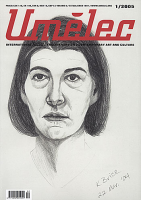










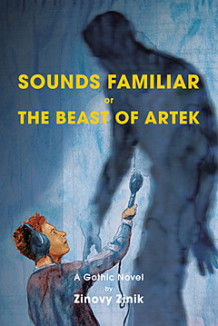






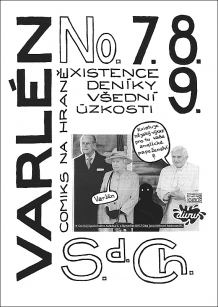




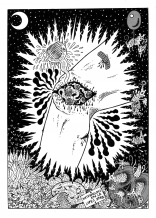
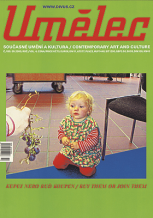




 We Are Rising National Gallery For You! Go to Kyjov by Krásná Lípa no.37.
We Are Rising National Gallery For You! Go to Kyjov by Krásná Lípa no.37.
Comments
There are currently no comments.Add new comment